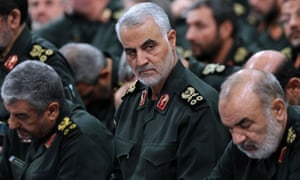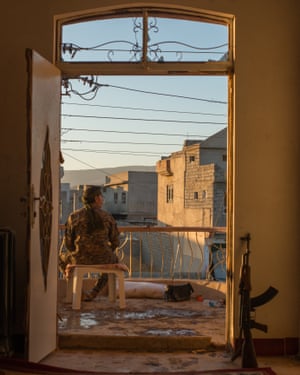Everyone has his own ax to grind:
From The New York Times article:
Instead of challenging this ideology of shame, the left has buttressed it by blaming white people as a whole for slavery, genocide of the Native Americans and a host of other sins, as though whiteness itself was something about which people ought to be ashamed.Well, somebody is to blame for "slavery, genocide of Native Americans, and a host of other sins. . . ." Somebody profited from each sin. And the sins continue. Visit Standing Rock. Listen to the Native Americans.
Somebody profits to this very day. If you are of Anglo-Saxon heritage, it is likely that you or your ancestors profited, and if you yourself did not profit, your relative ease and security may well have resulted from an ancestror's profit.
Classism is bad; ducking responsibility for living off the suffering of others is no way to escape classism. Read the article with a grain of salt, but read it. Though that is not its intention, it shows one way some Trump folks escape responsibility for their rages.
OPINION | CAMPAIGN STOPSWhat Happened on Election DayHow the election and Donald Trump’s victory looks to Opinion writers.A group of Trump supporters calling themselves the Mesa County Deplorables sharing a potluck meal in Grand Junction, Colo., in October. Credit Nick Cote for The New York Times
Stop Shaming Trump SupportersBy MICHAEL LERNERCOMMENT2016-11-09T13:17:29-05:00 1:17 PM ETIt turns out that shaming the supporters of Donald J. Trump is not a good political strategy.Though job loss and economic stagnation played a role in his victory, so did shame. As the principal investigator on a study of the middle class for the National Institute of Mental Health, I found that working people’s stress is often intensified by shame at their failure to “make it” in what they are taught is a meritocratic American economy.The right has been very successful at persuading working people that they are vulnerable not because they themselves have failed, but because of the selfishness of some other villain (African-Americans, feminists, immigrants, Muslims, Jews, liberals, progressives; the list keeps growing).Instead of challenging this ideology of shame, the left has buttressed it by blaming white people as a whole for slavery, genocide of the Native Americans and a host of other sins, as though whiteness itself was something about which people ought to be ashamed. The rage many white working-class people feel in response is rooted in the sense that once again, as has happened to them throughout their lives, they are being misunderstood.So please understand what is happening here. Many Trump supporters very legitimately feel that it is they who have been facing an unfair reality. The upper 20 percent of income earners, many of them quite liberal and rightly committed to the defense of minorities and immigrants, also believe in the economic meritocracy and their own right to have so much more than those who are less fortunate. So while they may be progressive on issues of discrimination against the obvious victims of racism and sexism, they are blind to their own class privilege and to the hidden injuries of class that are internalized by much of the country as self-blame.The right’s ability to portray liberals as elitists is further strengthened by the phobia toward religion that prevails in the left. Many religious people are drawn by the teachings of their tradition to humane values and caring about the oppressed. Yet they often find that liberal culture is hostile to religion of any sort, believing it is irrational and filled with hate. People on the left rarely open themselves to the possibility that there could be a spiritual crisis in society that plays a role in the lives of many who feel misunderstood and denigrated by the fancy intellectuals and radical activists.The left needs to stop ignoring people’s inner pain and fear. The racism, sexism and xenophobia used by Mr. Trump to advance his candidacy does not reveal an inherent malice in the majority of Americans. If the left could abandon all this shaming, it could rebuild its political base by helping Americans see that much of people’s suffering is rooted in the hidden injuries of class and in the spiritual crisis that the global competitive marketplace generates.Democrats need to become as conscious and articulate about the suffering caused by classism as we are about other forms of suffering. We need to reach out to Trump voters in a spirit of empathy and contrition. Only then can we help working people understand that they do not live in a meritocracy, that their intuition that the system is rigged is correct (but it is not by those whom they had been taught to blame) and that their pain and rage is legitimate.Michael Lerner, the rabbi of Beyt Tikkun Synagogue in Berkeley, Calif., is the editor of Tikkun magazine and chairman of the Network of Spiritual Progressives.
And no need to shamea anyone. Change the World instead! Quickly! Before I'm pushing up daisies.



















